#disney's pinocchio
Text
Emotionally devastating animation scene poll part 2
#disney#walt disney#childhood trauma#dumbo#the little mermaid#mulan 1998#mulan disney#the fox and the hound#hunchback of notre dame#wreck it ralph#zootopia#disney's cinderella#pinocchio#disney's pinocchio
228 notes
·
View notes
Text
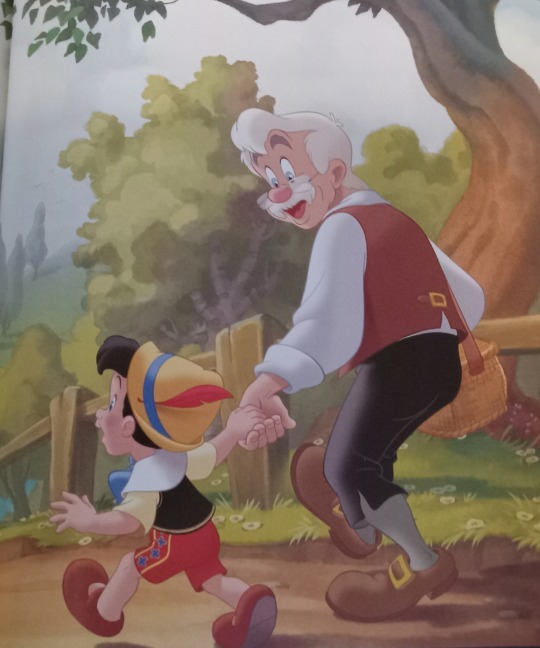


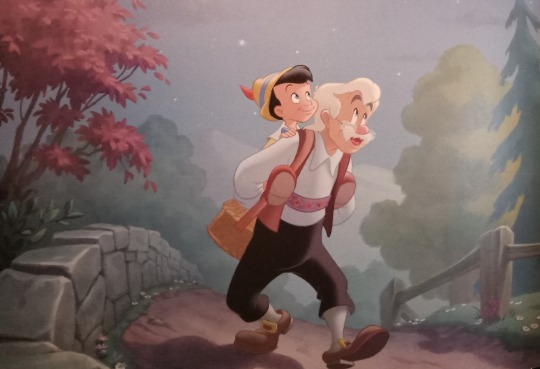

Geppetto and Pinocchio just being the adorable father and son that they are ❤️🥰😭
#disneynerdpumpkin#disney#disney pinocchio#pinocchio 1940#pinocchio#disney's pinocchio#geppetto#disney geppetto#pinocchio disney#THEY'RE SO ADORABLE I CAN'T#❤️❤️❤️❤️❤️❤️❤️❤️❤️❤️❤️❤️❤️#no i totally didn't get this literal disney children's storybook specifically for this story who are you kidding haha *cough*
23 notes
·
View notes
Text
Y'all gotta watch Guillermo Del Toro's Pinocchio on Netflix. If you've seen the ads where it goes behind the scenes a bit, it's even better when you watch it. Watch it blind, don't go into it knowing anything outside of the look of it. It's surreal gritty fairytale retelling that I did not see coming.
And of course a LOT better than Disney's remake. At least I think it is. It has Obi-wan Kenobi in it. And Hellboy. What can go wrong? Absolutely nothing.
#guillermo del toro#guillermo del toro pinocchio#netflix#disney#disney's pinocchio#pinocchio#animation#stop-motion#no spoilers here#highly recommend#obi-wan kenobi#hellboy#would not recommend for lil tikes tho#potentially
250 notes
·
View notes
Text

23 notes
·
View notes
Text
Pinocchio's education (1/3)
Jean-Marie Apostolidès wrote an article published in 1989, in the 73rd issue of the “Littérature” review/journal. The theme of this issue was “Mutations of images”, and the article in question covered Pinocchio. Its title being in French, “Pinocchio, ou l’éducation au masculin” – Pinocchio, a masculine education.
Here is a rough translation of the article: (I added the images myself, the original article is not illustrated)

The adventures of Pinocchio first appeared in the July 1881 issue of the “Giornale per i bambini”: it was then a series of monthly tales called “Story of a dummy/Tale of a puppet”. This set of adventures continued up until the end of October, the same year – it ended with what is now the 15th chapter of Collodi’s final novel: captured by thieves who wants his gold, Pinocchio is hanged to an oak tree, and in his last words the reader hears an echo of the words of a dying Christ… However, Carlo Collodi decided to continue the story beyond the death of the puppet – part because of his desire to go further into his invented world, part due to the insistence of the team of the “Giornale”. The death of Pinocchio becomes just one of many trials, an added obstacle, a rite of passage towards adulthood. On the 16th of February 1882, the monthly story appears again under a new title: The Adventures of Pinocchio. It would then go on until the 36th chapter, which sees Pinocchio finally being transformed into a real little boy. Less than a month after this final episode, in February 1883, The Adventures of Pinocchio are finally published as a single novel, and become an immediate bestseller.
Pinocchio is a child-puppet of an unclear age and whose body, like those of teenagers, needs to evolve and mutate before reaching adulthood. This transformation is not a natural one – it is a social recognition, that partially relies on the dummy’s willingness to behave like a “real little boy”. But the behavior asked and expected of him is a fluctuant and moving thing, that depends on the social context. For example, between the Pinocchio of Collodi, and the Pinocchio of Walt Disney (the latter having mostly replaced the original character in many countries, except Italy), many differences can be observed. Not only do they depend on their respective political contexts, but they also both express two differing definitions of masculinity. To become a man in the Tuscany of the 1880s is not the same thing as becoming a man in the United-States of the 1940s. The character of Pinocchio is especially prone to variations, since he is not fixed: he belongs to both myth and History, to the reality and to the imagination. As with a myth, every retelling takes a new direction, and Collodi was the first to show how these variations could work by resurrecting his dummy. The comparison of Collodi’s and Walt Disney’s versions will allow to understand how masculine education evolved, and how the roles tied to childhood evolved.

9 notes
·
View notes
Photo

Today’s character of the day is: Pinocchio from Disney’s Pinocchio (1940)
#Pinocchio#Disney#Pinocchio 1940#Classic Characters#kingdom hearts#Kingdom Hearts Chain of Memories#Kingdom Hearts 3D: Dream Drop Distance#House of Mouse#The House of Mouse#disney's pinocchio
24 notes
·
View notes
Text

Banner for Tiger Lily (Peter Pan) and Lampwick (Pinocchio), Disney Decendents themes, which says "Tiger Lily x Lampwick are The IT Couple of Auradon Prep"
For @casinotrio1965 :) Hope you like the look!!
We're closed for now, thank you
#banner#banners#banner size#banner sized#banner design#tiger lily#tiger lily peter pan#peter pan#peter pan tiger lily#pp#pp tiger lily#disney#disney peter pan#disney's peter pan#lampwick#lampwick pinocchio#pinocchio#pinocchio disney#pinocchio lampwick#disney pinocchio#disney's pinocchio#decendents#decendents aesthetic#disney descendants#auradon prep
11 notes
·
View notes
Photo
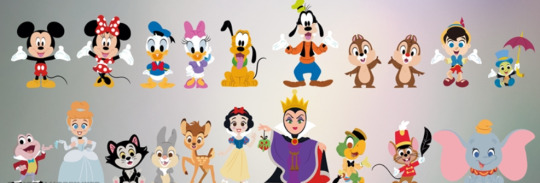
Preview visual for the first part of a Disney figurine collection set to span a hundred characters.Estimated to release around August this collection includes:
Mickey
Minnie
Donald
Daisy
Pluto
Goofy
Chip
Dale
Pinocchio
Jiminy Cricket
Mister Toad
Cinderella
Figaro
Thumper
Bambi
Snow White
The Evil Queen
Jose Carioca
Timothy Q. Mouse
Dumbo
#Disney#Mickey Mouse#Minnie Mouse#Donald Duck#Daisy Duck#Pluto the Dog#Goofy#Goofy Goof#Chip and Dale#Pinocchio#Disney's Pinocchio#Jiminy Cricket#Mister Toad#Cinderella#Disney's Cinderella#Bambi#Snow White#Three Caballeros#Jose Carioca#Dumbo#Timothy Q Mouse
28 notes
·
View notes
Text
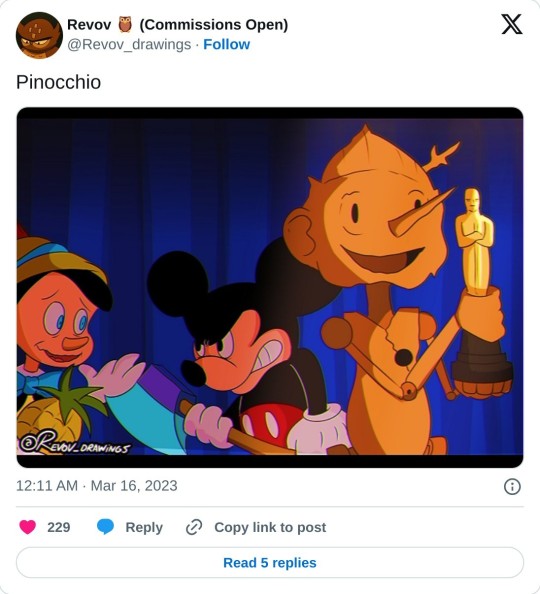
art by Revov
#Disney#Netflix#Mickey Mouse#Disney's Pinocchio#Pinocchio#Guillermo del Toro's Pinocchio#retro#vintage#1990s#VHS
12 notes
·
View notes
Text
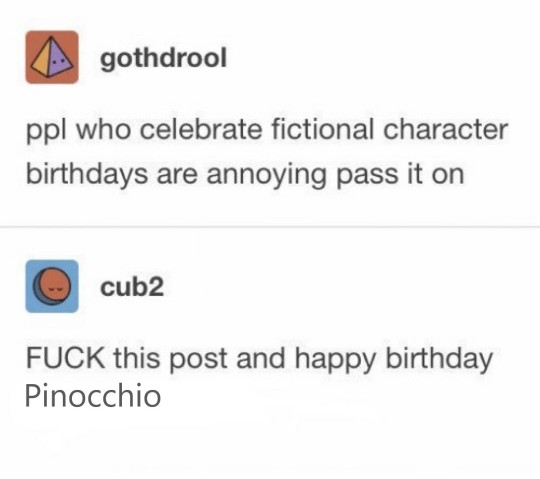
#pinocchio#disney's pinocchio#pinocchio movie#disney#disney movies#movies#animation#meme#fictional character birthday#happy birthday pinocchio
24 notes
·
View notes
Photo

Back on my Pinocchio Bullshit, have a Lampwick.
Line art under the cut.
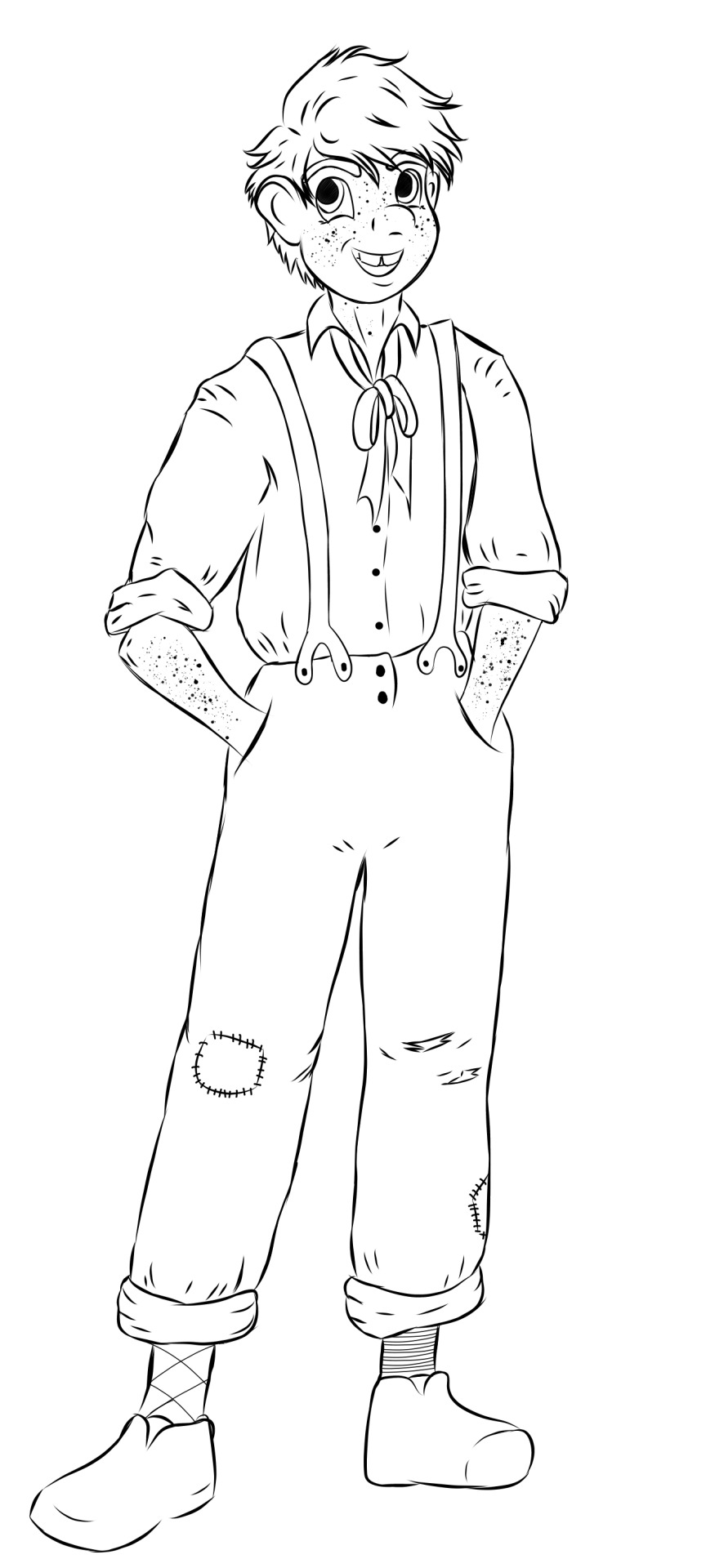
9 notes
·
View notes
Text
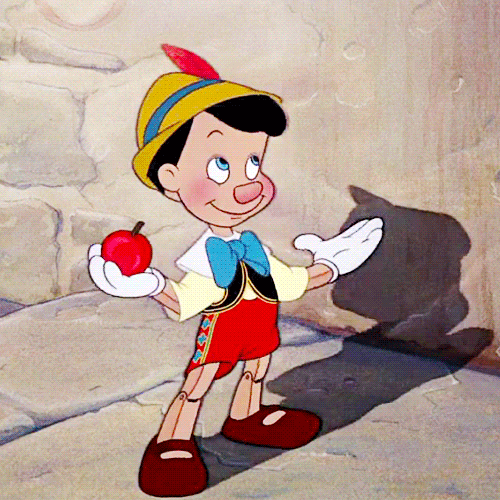
2 notes
·
View notes
Text
Pinocchio: Just be yourself. Say something nice!
Elinor: Which one? I can't do both.
#ellie is nice for the record#she's just very sassy but she's cute lol#disneynerdpumpkin#disney#disney pinocchio#pinocchio 1940#incorrect quotes#disney oc#my oc#elinor hope lorenzini#pinocchio joseph lorenzini#disney's pinocchio#pinocchio disney
3 notes
·
View notes
Text

Disney Pinocchio but he looks like this
(Also that is Pesos. 9000 pesos is like 49 dollars. Disney could absolutely go to Argentina and buy one of these)
12 notes
·
View notes
Text
Pinocchio's education (3/4)
And here is the last part of my rough translation of Apostolidès’ article “Pinocchio, a male education”. If you want to check the original in French, it is available for free here. [EDIT: Turns out Tumblr doesn't like having posts too long, so I'll need to cut the third post into two...]

Created in 1940, Walt Disney’s version presents an Americanized Pinocchio. The animated movie changed so much Collodi’s character that it was very coldly received in Italy upon its release. A first change of note: In Disney’s movie, the story is narrated by the Talking Cricket who is now called Jiminy Cricket. In Collodi’s novel, the cricket as just one voice among many – here, he is promoted to the rank of “official conscience” of Pinocchio. In the novel, Collodi has many different external voices speak to the puppet, all transmitting to him through proverbs what were usually advices born of folk-wisdom. This true concerto, played usually by animals (the talking cricket, but also the slug, the pigeon, the parrot and many more), was a double of the parental voice. As such, the entirety of nature gathered around Pinocchio to tell him which path he should follow. With Walt Disney, Jiminy becomes an internalized conscience, he is the superego of the puppet, solemnly ordained by the Blue Fairy (“So she dubbed me Sir Jiminy Cricket, Lord High Keeper of the Knowledge of Right and Wrong”). From the first to the second version, we went from a Pinocchio shaped by exterior elements to another with a more modern sensibility, determined by internal elements. This new Pinocchio does not show any rebellion against the adult world. On the contrary, he impulsively tries to take advantage of it, not able to recognizing in this adult world what is good for him, and what is bad for him. A part of his misfortunes also comes from the fact that his conscience doesn’t know what to choose either – here again, we find ourselves in an era when values were changing.
Since the original context of Collodi’s creation disappears with Walt Disney’s version, the story is now inscribed in a new one: the American values of the early 1940s. Geppetto is not a poor wood-sculptor constantly hungry anymore: he is a lonely craftsman, living comfortably, and who builds toys for children. When the fairy grants him his wish to see his puppet come to life, she just says: “Good Geppetto, you gave so much happiness to others, you deserve to be rewarded”. The fairy appears in the beginning of the movie, while Collodi only introduced her in the fifteenth chapter. When the audience first discovers Pinocchio, Geppetto is almost done with his work, by painting a smile on the wooden face. As such, the puppet does not spring to life on its own: he needs both parents. The “bastard” aspect of the original character, that we highlighted before, is replaced by a conformism making Pinocchio a little boy immediately fit for social order. His father gave him his shape, his outside appearance; his mother gave him his soul and his life. It is also her mother who sets him free from the strings that restrained him: the mechanical education of the father is followed by the mother’s psychological and moral education. Walt Disney’s fairy lacks any ambivalence: she has the same physical and moral traits as the dreamy princesses of the other animated fairytales of the American master, Cinderella and Snow-White. Towards Geppetto, she behaves like a wife – a younger wife, a distant wife, a benevolent wife. She even speaks to him as if he was the child. Meanwhile, towards the puppet, she behaves as a protective mother and as a very moral figure. As soon as Pinocchio asks her what he must do to become a real boy, she lists to him the moral stereotypes of the America of the time: “Prove yourself brave, truthful and unselfish. Be a good son to Geppetto - make him proud of you ! Learn to tell right from wrong. Then, some day, you will wake up and find yourself a real boy”.

Just like the parental figures, the values offered to Pinocchio lack any ambiguity. The good characters are easily distinguishable from the villains – the villains are always dressed in shabby, poor clothes. For example, the Fox and the Cat that are seemingly ignored by a society of abundance. The same thing is true for the rascals of Pleasure Island: a close-up on their shoes show that they come from the lower class. Their transformation into donkeys is a metaphor to reveal that the only thing they truly bring was workforce.
The tragedy of Pinocchio, a little boy from middle-class, is that due to frequenting them he is threatened with ending up as a lower-class. The movie takes a great care to show who is good and who is evil: all the ambiguous characters, such as Fire-Eater the puppeteer, lose any form of complexity. Within Collodi’s work, he borrowed traits from Bluebeards: when Pinocchio arrives within the theater, the puppets of the commedia dell’ arte see him as a savior. Following his example, the puppets set themselves free from their traditional roles, and made Pinocchio triumph. After thinking about turning him into fire-wood, Fire-Eater forgives Pinocchio and sends him home with five gold coins. With Walt Disney’s, the puppeteer, renamed Stromboli, becomes a former partner of the Fox and the Cat, now reinvested in the business of theater. The animal duo sells him Pinocchio to become the star of his show. The problem introduced now is the one of the child sent too soon within the economic system: Pinocchio embodies the myth of the child-star, freshly created by Hollywood a few decades earlier. Pinocchio is not a child anymore, and yet cannot be recognized as an adult. If on one side he does a work that brings money, on the other he is tricked and exploited by Stromboli.
Within Walt Disney’s work, the conflict of values is located between the world of traditional crafts, and the world of the big industry: the world of Geppetto against the world of the little fat man that turns children into donkey (aka, into the lower class). Pinocchio would not be thinking about leaving his father’s house if the outside world didn’t offer him endless temptations. They are not solely tied to traditional forms of entertainment, such as the puppet theater – they are also focused on the Pleasure Island, where children stay for a few weeks before being metamorphosed into donkeys. On this island, carousels and games can be found, but also plenty of adult activities usually forbidden to children: smoking, drinking, playing billiard… Sexuality is not evoked in the movie, except in a minor way by “inferior” beings, such as Figaro the cat or Cleo the fish. On Pleasure Island, the children can also destroy the things that represent the traditional Western values: the traditions of literature and art. Torn books can be found in the streets, an entire palace is offered to be destroyed. When Candlewick and Pinocchio enter in said palace, a child destroys with an axe a piano ; and if Candlewick lights up his cigar by scratching his match against the Joconde, his friend destroys with a stone and great pleasure a cathedral’s stained glass.
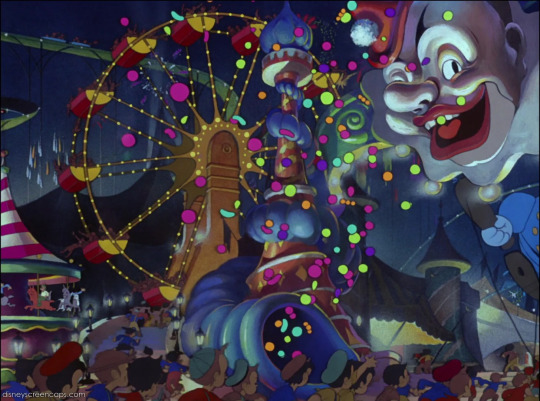
In 1940, these scenes were clear allusions to the book-burnings that had happened the previous years within Nazi Germany. But, they could also be read as an allegory of the consumerist society that was building itself within the United-States. Geppetto, a product of the traditional Protestant mentality, belongs on a social level to a world that is economically threatened: he doesn’t have any appeal that could keep his son with him. Pinocchio will rather turn towards the outside world, and let the outside images filled the emptiness of his private life.
From a psychological point of view, Pinocchio is torn between the traditional modern (determined and shaped from the inside), and a new model. A new model that encourages imitation, an identity that forms itself with a group of kindred. Pinocchio is as much eager to look like the “others” around him as he is separated from his original nature of puppet. Another reason behind Pinocchio’s quest for a male model in the outside world is Geppetto’s age, and his behavior. The brave man is at the same time an old man, an elder, and a buddy-dad, a friend-father, with which the child plays and dances, but who is no model. And he is not a true husband for the fairy, who rather floats around the male world as a distant by protective mom. Pinocchio can only solve his contradictions by becoming a hero – that is to say by escaping into the extraordinary. By saving Geppetto’s life, by sacrificing himself for him, he takes the place of the absent father. The fairy-mother recognizes this substitution, and as such turns the child into a man, by making him a “real boy”. This promotion happens in the movie in a very symptomatic way, by the acquiring of a new finger on each hand: the puppet of Geppetto only had four fingers on each hand, but when he is transformed, the first thing Pinocchio sees when he wakes up is his human hand.
3 notes
·
View notes
